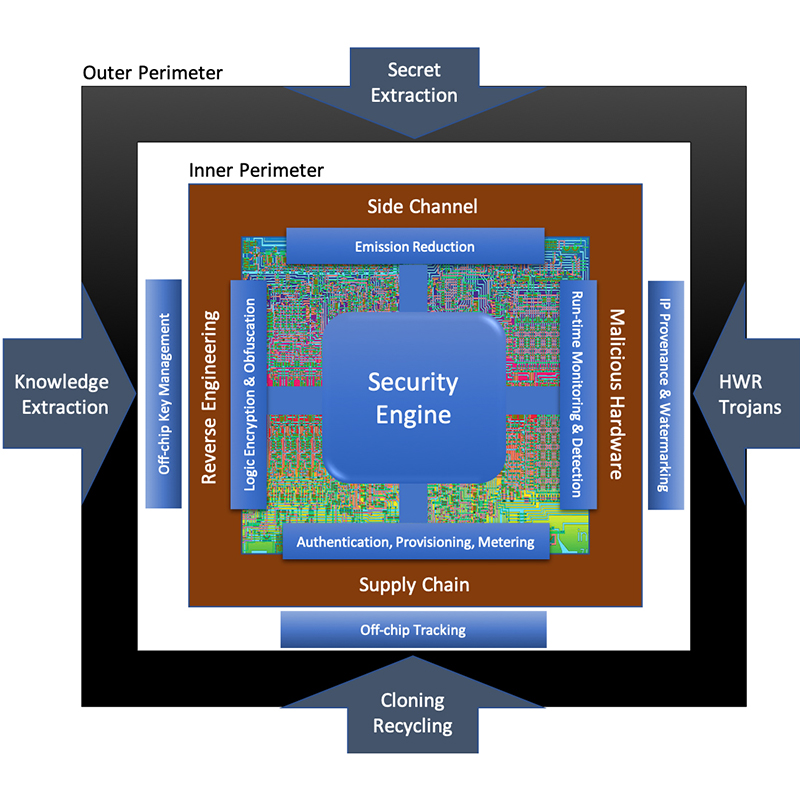News Story
New UMD Center to Focus on Railway Cybersecurity and Safety

As with most other industries, U.S. railways have undergone major transformations as a result of the digital revolution, with distributed computer systems now handling many aspects of their control and operations.
That leaves them potentially vulnerable to cyberattacks and other forms of sabotage. A bad actor could, in theory, interfere in a myriad of ways, from introducing delays to orchestrating an accident. An attack on railway infrastructure, whether cyber or physical, could be catastrophic, particularly if it targets trains carrying chemicals or hazardous materials. Such an accident can have a cascading effect, amplifying the scale of environmental disaster. Interaction between railway and other infrastructure relies increasingly on digital technologies, thus opening the door for attacks.
Even when incidents are minor in scale, they can cause significant disruptions and economic losses. In November, a ransomware attack on a railway subcontractor in Denmark led to trains being halted for several hours. Earlier in the year, cybercriminals breached the computer system used by Italy’s state railroad and its subsidiaries, forcing a suspension of ticket sales.
Fortunately, advanced tools are available that can help manage such threats, and researchers at the University of Maryland’s A. James Clark School of Engineering are poised to help the industry take advantage of these tools.
A new Digital and Cyber Railway Engineering and Operations Center (DCREOC) based at the UMD civil and environmental engineering department, will work to advance the use of high-tech tools to secure this crucial part of the nation’s infrastructure. Among other topics, the center will explore the use of quantum computing and technology to address operational, logistical, and maintenance issues in railway engineering. The center will leverage the quantum technology resources currently available at UMD, which is home to several labs and centers dedicated to quantum-related research. These include the Joint Quantum Institute, the Joint Center for Quantum Information and Computer Science, the Quantum Technology Center, and the NanoCenter.
“We seek to maximize the benefits of digital technologies in providing safe and secure railways,” said UMD Chair of Civil and Environmental Engineering Nii Attoh-Okine, who will lead the new center. “We envisioned the center as a leader in this area.”
“In the era of digital applications, fundamental changes are needed in areas such as data storage and sharing. As leaders in the railway engineering field identify the needed changes and develop best practices, the DCREOC will serve as a focal point to guide this new era of railway transportation.”
Dr. Nii Attoh-Okine, Professor and Chair, UMD Department of Civil and Environmental Engineering
“Our aim is to support industry through research, education, and policy. Our center will work with a diverse range of specialists and partners to facilitate changes that will address appropriate maintenance techniques, operational efficiency, and security and safety in railway engineering and operations,” he said.
“In the era of digital applications, fundamental changes are needed in areas such as data storage and sharing,” Attoh-Okine said. “As leaders in the railway engineering field identify the needed changes and develop best practices, the DCREOC will serve as a focal point to guide this new era of railway transportation.” The center will also help in developing the next generation of railway engineers and practitioners, ensuring they are well-versed in emerging technologies.
In addition to tapping the expertise available at UMD’s highly regarded transportation engineering program, the center will partner with two external institutions–the Center for Artificial Intelligence at Japan’s University of Tsukuba and the railway engineering program at Delft University, Netherlands. Research will cover a gamut of resilience-related topics, from blockchain applications to track geometry modeling.
On March 7-8, the new center will kick off its activities by hosting its first Cyber Resilience and Quantum Computing in Railway Engineering and Operations workshop, an event that will highlight new academic research at the intersection of cyber resilience. artificial intelligence, and machine learning within the context of railway safety and security.
Dean Samuel Graham. Jr. of the Clark School welcomed the launch of the new center, saying it would further enhance Maryland Engineering’s role in supporting critical societal needs.
"Our nation needs a safe and secure logistical supply chain, which is strongly dependent on our rail system. To ensure the efficient delivery of goods through this supply chain, it’s essential we continue to modernize and protect our infrastructure involving trains, railways, and other assets needed in their operation. With our leading capabilities in AI, machine learning, quantum, and data analytics, we're uniquely positioned to advance the country's rail infrastructure and enable the employees who manage it. We're excited to bring this new center online."
Published February 7, 2023











